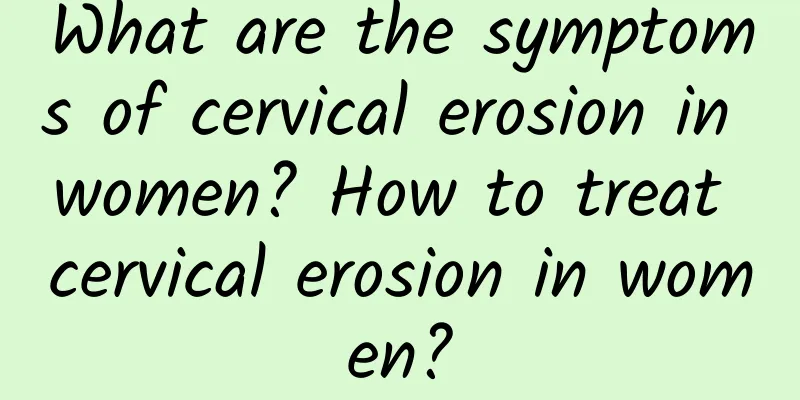What are the symptoms of adenomyosis?

|
What are the clinical symptoms of adenomyosis? Many people want to know. As we all know, adenomyosis is a common gynecological disease, which brings a lot of torture and harm to patients. In order to avoid the occurrence of the disease, we need to correctly grasp the clinical symptoms of adenomyosis, because symptomatic treatment of the disease can achieve good results. So what are the clinical symptoms of adenomyosis? Clinical symptoms of adenomyosis: (1) The clinical manifestations of adenomyosis are mainly: dysmenorrhea with progressive aggravation, menstrual abnormalities, infertility, dyspareunia, pelvic pain, low fever, increased vaginal discharge and menstrual pain. The cause of dysmenorrhea may be that the ectopic endometrium bleeds with the changes in the ovaries, resulting in increased local pressure outside the lesion, which stimulates the surrounding smooth muscle tissue to spasm and contract, causing pain. (2) Gynecological examinations often reveal an enlarged uterus, which is enlarged during or before and after menstruation and gradually shrinks. However, it should not exceed the size of a 3-month pregnancy. If it is larger than 3 months, it often indicates complications. (3) According to 206 cases of adenomyosis in the Obstetrics and Gynecology Hospital affiliated to Zhejiang University School of Medicine, 188 cases of uterine enlargement, 110 cases of dysmenorrhea, and 143 cases of menorrhagia or menstrual disorders. Among the 188 patients with uterine enlargement, 172 cases had uterine size smaller than 3 months of pregnancy, none of the cases of simple adenomyosis exceeded 3 months of pregnancy, and 16 cases of uterine enlargement exceeding 3 months of pregnancy all had uterine fibroids. (4) As for the cause of menorrhagia, although the traditional view is that the increase in uterine volume and endometrial area can increase the chance of bleeding, current clinical observations show that the uterus of adenomyosis is often smaller than the size of a 3-month pregnant woman. (5) Uterine adenomyosis can also lead to infertility. This has been reported for a long time. Lavilis (1997)[6] proposed that the disease is related to fertility, miscarriage and caesarean section history. Adenomyosis mainly occurs in women aged 40 to 50 years old. In recent years, with the widespread use of intrauterine operation technology, some young women have also developed the disease, including women aged 16 to 30 years old. In addition, women of childbearing age can also cause infertility. According to literature reports, among 26 women with adenomyosis who wanted to have children, 20 were infertile and had habitual miscarriage, accounting for 76.9% of the surgical patients. It can be seen that the status of infertility in adenomyosis patients cannot be ignored. We must understand the clinical symptoms of adenomyosis, which is the premise to help us accurately understand the disease. Of course, adenomyosis is extremely harmful. If we want to completely avoid the occurrence of the disease, after understanding the clinical symptoms of adenomyosis, we must actively consult the advice of relevant experts. |
<<: Is endometriosis recurring at a high rate?
>>: How to avoid recurrence of adenomyosis
Recommend
Is eating fruit after a meal a magic weapon to help digestion? Nutritionist: Eating the wrong food may lead to obesity, beware of these three landmines
"Is eating fruit after a meal really a magic...
Is cervicitis cervical erosion?
Cervical erosion is an old name, and now it is cl...
Are you a skinny fat person or a puff person? Nutritionist reveals: 6 foods that accelerate fat loss during exercise
Are you a puff person who is thin on the outside ...
Dietary precautions for threatened abortion
There are many situations of threatened abortion ...
Will pregnant women have miscarriages if they eat black rice?
Will pregnant women have miscarriages if they eat...
Precautions for women with congenital absence of vagina
What are the precautions for nursing women with c...
Stop calcium! Taking more than 500 mg of calcium tablets a day increases the risk of heart disease
Many elderly people have osteoporosis problems to...
What is bacterial vaginosis? Most people don't even know it
Bacterial vaginosis is the most common lower repr...
Will eating cut-edge toast for breakfast make you lose weight? Does raw toast make you fat? Are whole wheat the healthiest? A comparison of the calories of 5 types of toast
During the epidemic, when ordering breakfast deli...
What are the dietary requirements for patients with bacterial vaginosis?
Women with bacterial vaginosis must pay attention...
Local weight loss: 9 parts of your body can be easily slimmed down
The weight loss methods for different parts of th...
Nurses drink bubble tea as their main meals, nutritionists: 3 tips for smart eating
As the saying goes, "Eating is the most impo...
How to regulate diet for patients with pelvic peritonitis
Pelvic peritonitis is a common gynecological dise...
What are the dangers of multiple abortions for women? The most comprehensive care knowledge for women after abortion
Multiple abortions can cause great harm to women&...
What preparations should be made before the abortion?
Abortion refers to the termination of pregnancy b...









